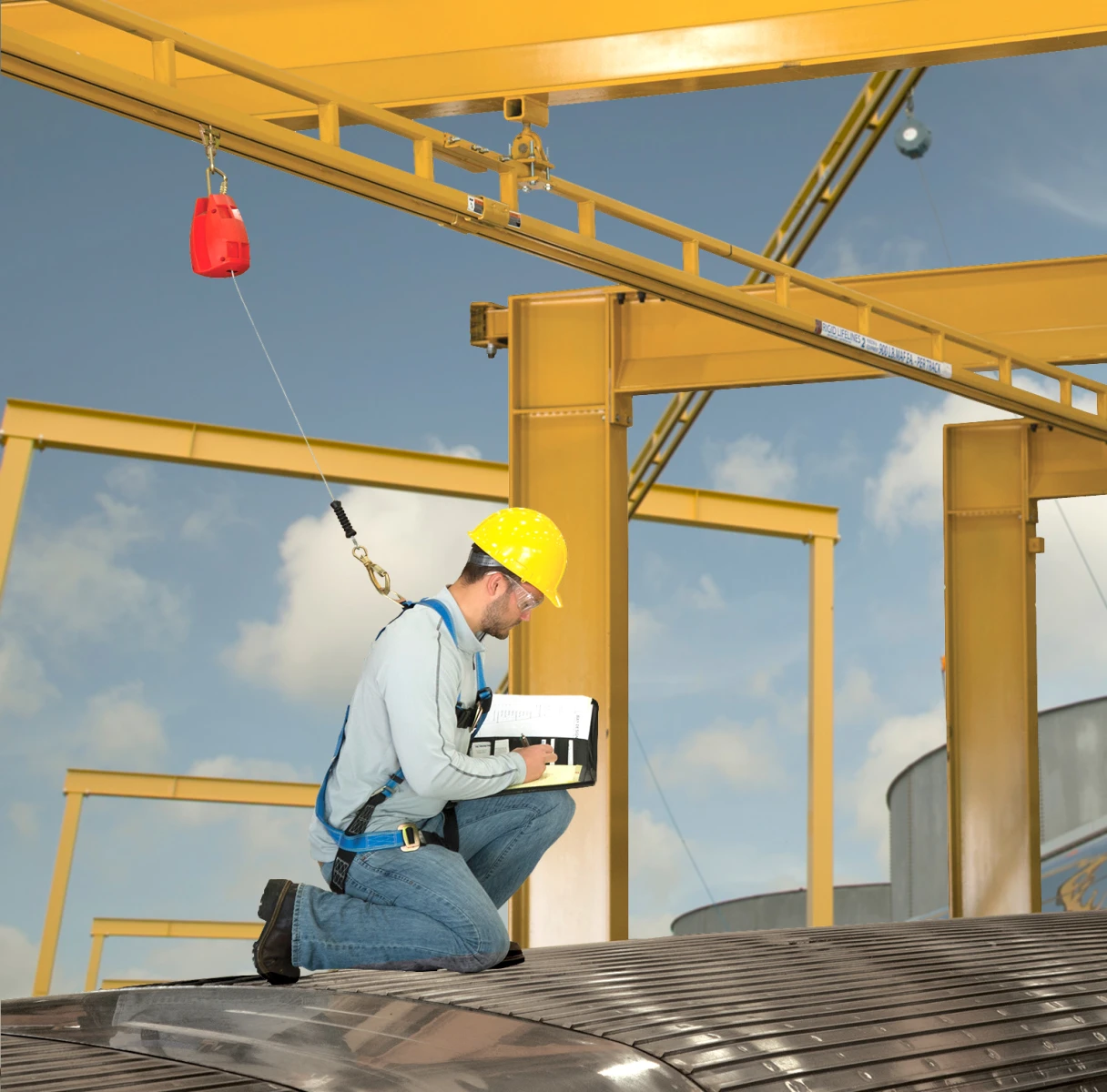Fall Protection: The ABCs of Connecting Devices

A personal fall protection arrest system (PFAS) is comprised of three vital components: an anchorage, body wear (full-body harnesses), and a connecting device (a shock-absorbing lanyard or self-retracting lifeline). The safety of at-height workers depends on these three components, and each one must be in place and used properly to provide maximum worker protection.
When discussing fall protection, anchorage connectors and full body harnesses receive a lot of attention. We don’t always stop to think about connecting devices like self-retracting lifelines or shock-absorbing lanyards, and yet these are the two components that bear the greatest forces during a fall.
Before we discuss the importance of the connecting device, let’s review the definition of each PFAS component, as defined by OSHA and ANSI.
According to OSHA, a personal fall arrest system is required if any risk exists that a worker may fall from an elevated position. Fall protection itself is required anytime a worker reaches a height of four or more feet for general industry and six or more feet for construction. To determine your working height, measure the distance from the walking/working surface to a lower level or the ground below. As we discussed above, OSHA mandates the use of a full-body harness with a shock-absorbing lanyard or retractable lifeline as part of the complete PFAS. A full-body harness, for instance, distributes the forces throughout the body, and a shock-absorbing lanyard decreases the total fall arresting forces. Let’s look at each of these components, briefly, before diving deeper into the importance and specifications of connecting devices such as shock-absorbing lanyards and self-retracting lifelines.
ANCHORAGE/ANCHORAGE CONNECTORS:
An anchorage is commonly referred to as a tie-off point, such as an I-beam, rebar, scaffolding, or rigid track system. An anchorage is—quite literally—a secure point of attachment for your lifeline/ lanyard that is independent from the worker’s means of support/suspension. An anchorage connector, on the other hand, is the component used to join the connecting device (shock absorbing lanyard or self-retracting lifeline) to the anchorage. Anchorages must be placed high enough for a worker to avoid contact with a lower level should a fall occur, and they should be able to support 5,000 pounds of force per worker or maintain a safety factor of at least two, under the supervision of a qualified person. Anchorage connectors must be positioned so that workers won’t endure a swing fall in the event of a fall from height.
Read full article in the Linemen Safety Special Edition 2021









